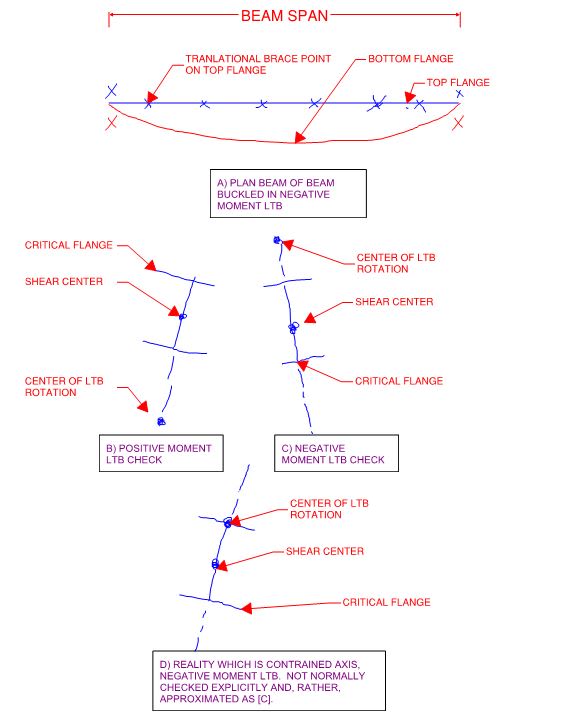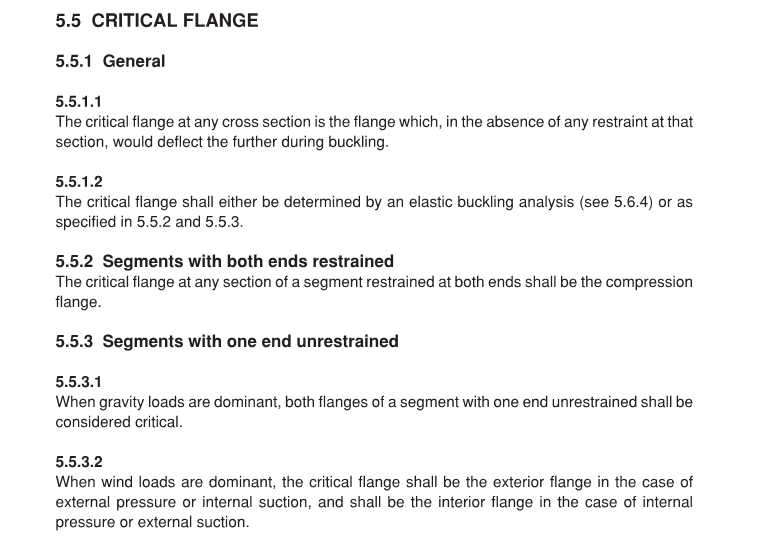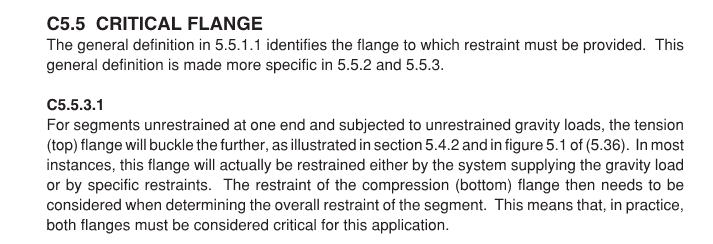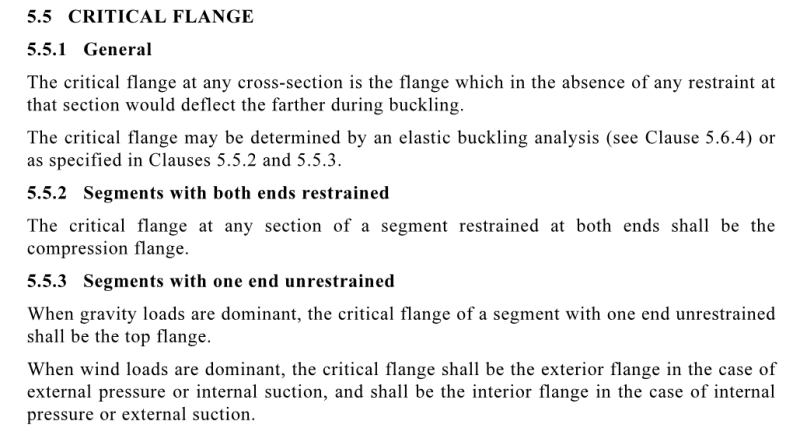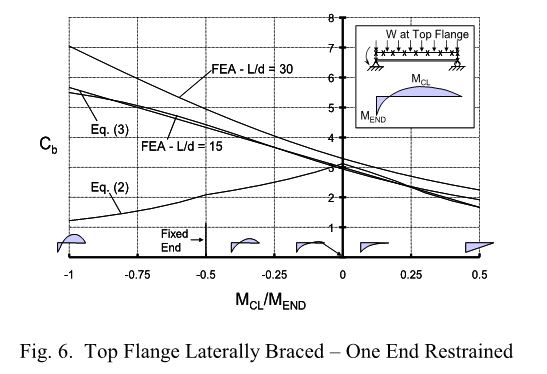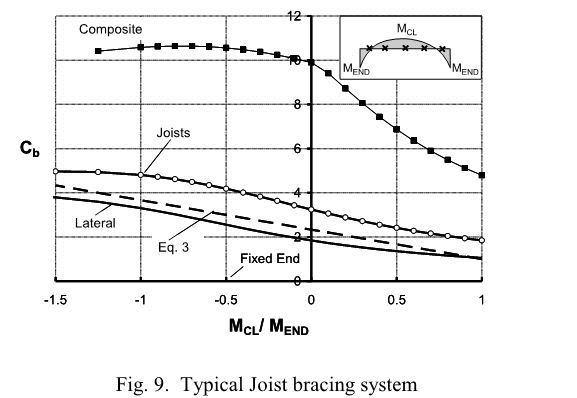@Tomfh/Agent666,
Tomfh said:
It would also be an extremely misleading clause as most everyone understands “compression flange” to mean the flange under compression.
And indeed it is.
I have a dream. And I propose that we do it together. First I need to bash the Aussie steel code however. Please forgive me that as, no doubt, there is some national pride involved.
When I look at the Aussie steel code on LTB, this is what I see:
1) Code provisions that do a good deal more designer spoon feeding than you see in North American codes. Is that good? Bad? Prudent? Insulting?
2) On balance, I would have to say that the spoon feeding is prudent. Structural engineers are notoriously bad at stability because, frankly, the math is well above our comfort zone on average. I've worked with a wide variety of designers in Canada in the US and my experience is that mistakes get made often. And I suspect that an Aussie style spoon feeding would improve that situation a great deal.
3) In my opinion, the Aussie code falls on it's face with respect to exactly this issue: beams with inflection points. Good for simple spans; uncommonly good for cantilevers; misleading for for beams with moment reversals. The trouble with spoon feeding is that it's near impossible to make it perfectly applicable to all situations. It is, after all, an attempt to make a very complex thing simpler than it really is.
So here's my my dream:
4) I convince you guys that my way is the right way from a purely theoretical standpoint. Maybe I pull that off and maybe I don't. I feel that my odds are pretty good if you guys give me some room to run and make of point of being flexible. And, if I can't convince you guys, that will be appropriate vetting to prevent me from pursuing what would come next.
5) We attempt a rewrite of the Aussie LTB provisions to sort this out. I expect this will be quite a challenge given that a) some smart cookies obviously composed the original and b) it would require great linguistic precision and the ability to anticipate the ways in which things may be misinterpreted by designers.
6) We put our proposed rewrite in front of the Aussie steel code steering committee, whomever the heck they be.
7) For the rest of our days, we vaingloriously point to the Aussie LTB provisions and say "hell yeah, we're the dudettes that got that written properly".
Any takers?

